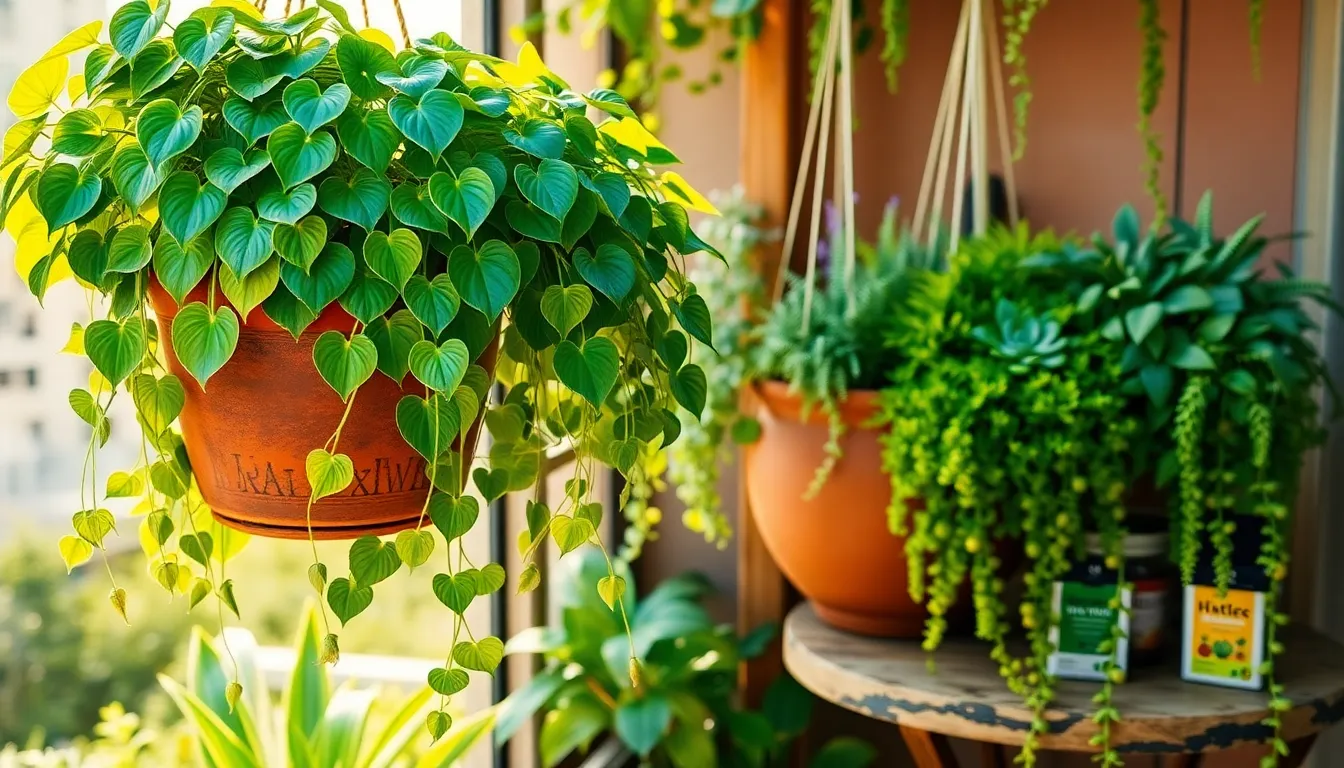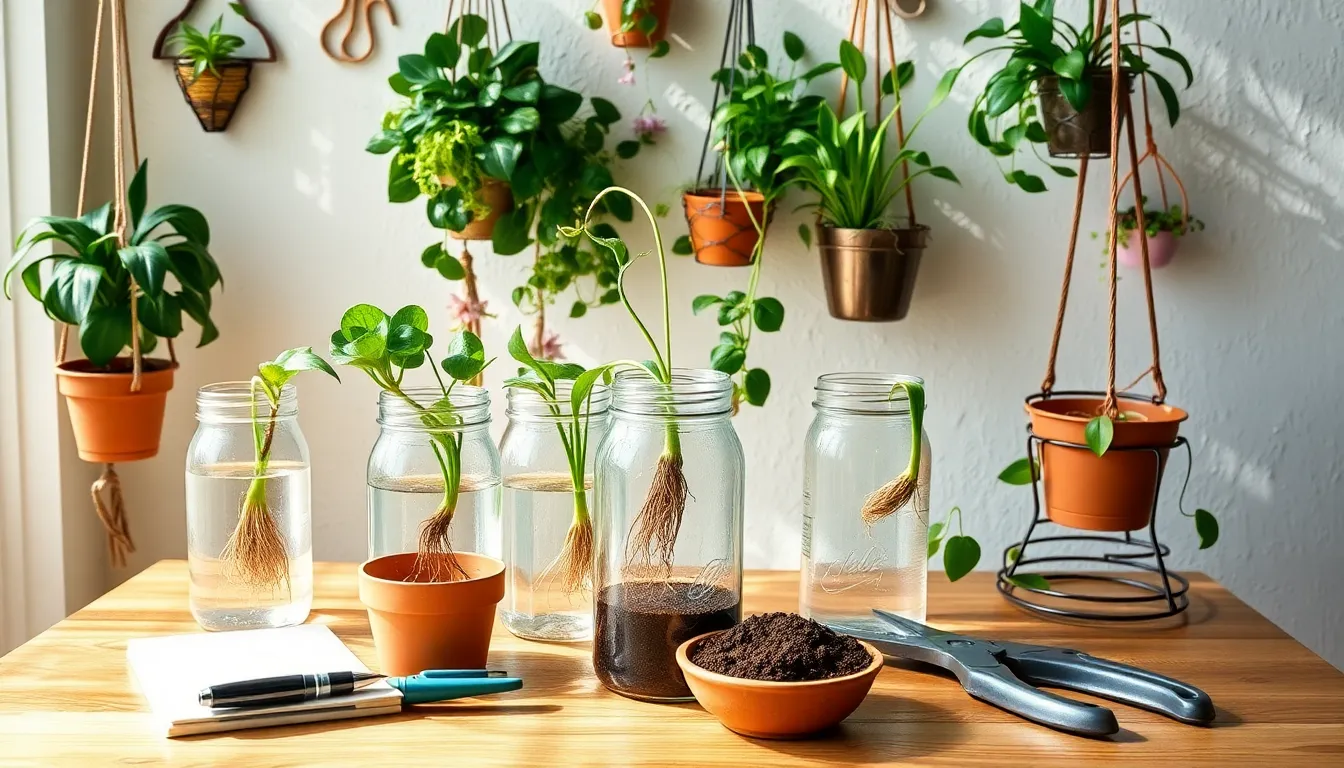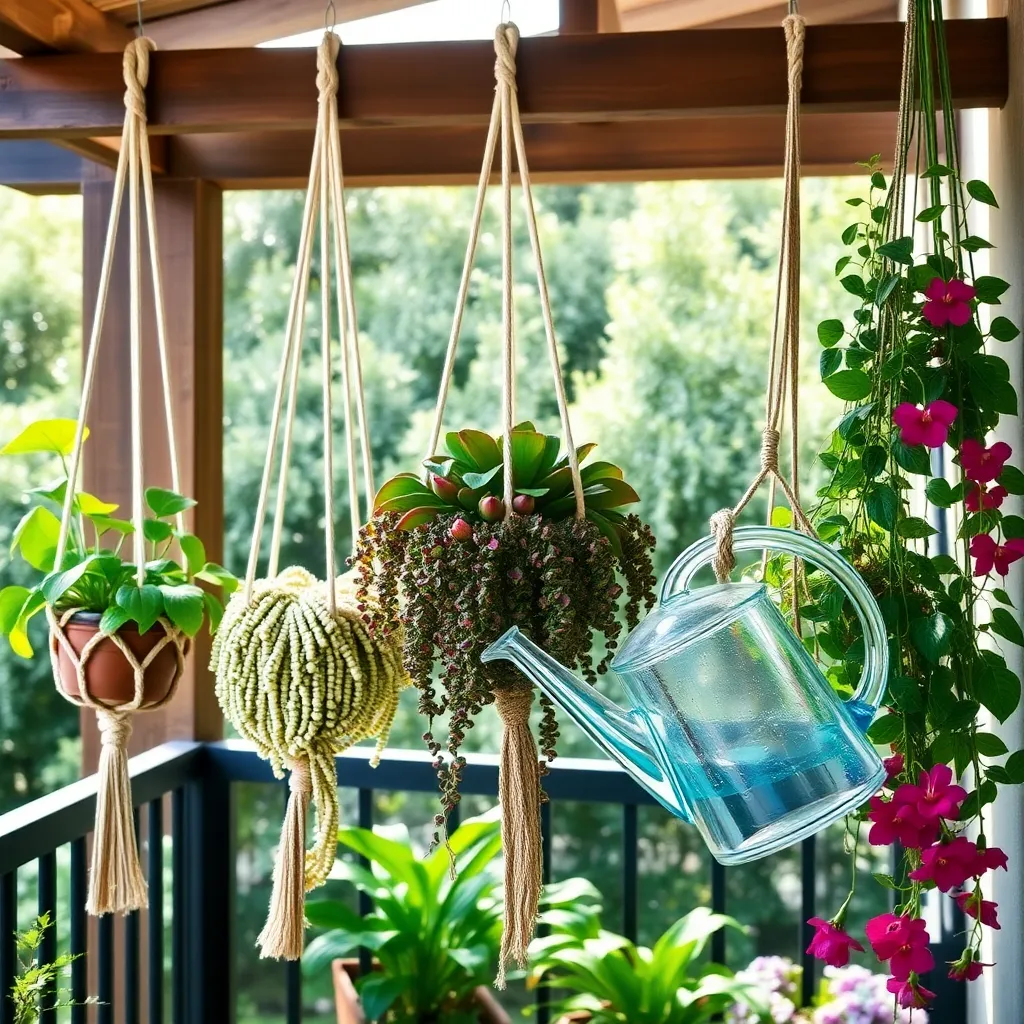Welcome to a world where your plants defy gravity and breathe life into every corner of your home. Whether you’re just discovering the joys of gardening or have cultivated your green thumb for years, “10 Creative Hanging Plants Display Ideas” is your gateway to transforming ordinary spaces into extraordinary, lush havens.
Imagine the delight of seeing vibrant leaves cascade from above, creating a living tapestry that captivates the eye and soothes the soul. This guide is packed with practical ideas that not only add aesthetic charm but also maximize your space, making it perfect for urban gardeners and plant enthusiasts alike.
Dive into these innovative displays and unlock the secrets to thriving indoor gardens that bring endless joy and satisfaction. By the end, you’ll not only feel inspired but also equipped with the confidence and knowledge to craft your own hanging garden oasis.
Repurpose Old Ladders for Display
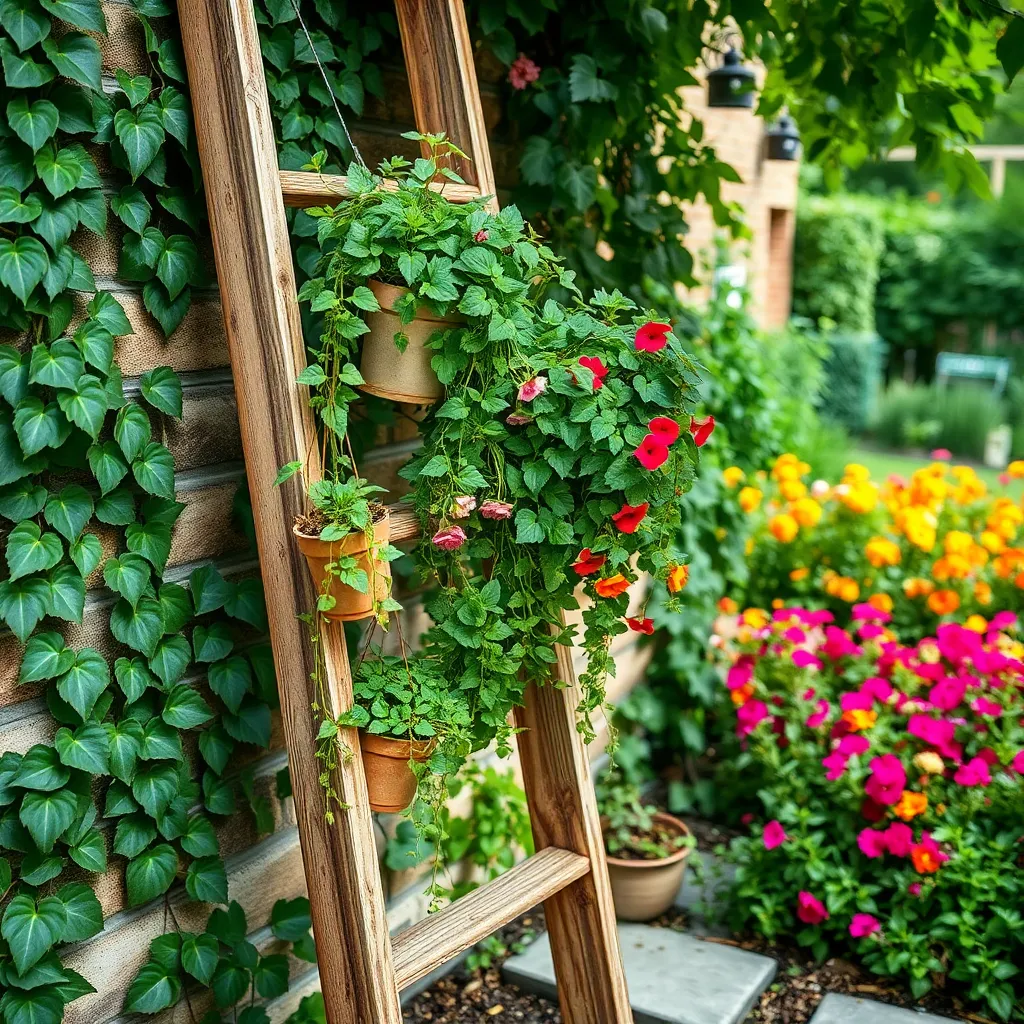
Old wooden ladders make excellent displays for hanging plants, offering a rustic charm to your garden space. By leaning a ladder against a wall or fence, you can easily suspend small pots from the rungs using sturdy hooks or ropes.
Begin with lightweight plants such as **string of pearls** or **spider plants**, which thrive when their roots are slightly pot-bound. Ensure they are planted in well-draining soil, such as a mix of cactus soil and perlite, to prevent root rot.
For a lush effect, consider training climbing plants like **sweet peas** or **morning glories** to grow around the ladder. These plants require a sunny spot and regular watering, especially during dry spells, to encourage vibrant blooms.
Advanced gardeners might experiment with trailing herbs like **thyme** or **oregano** for a more functional display. These herbs require slightly alkaline, sandy soil and should be pruned regularly to promote bushy growth and prevent legginess.
Use Macramé Hangers for Style
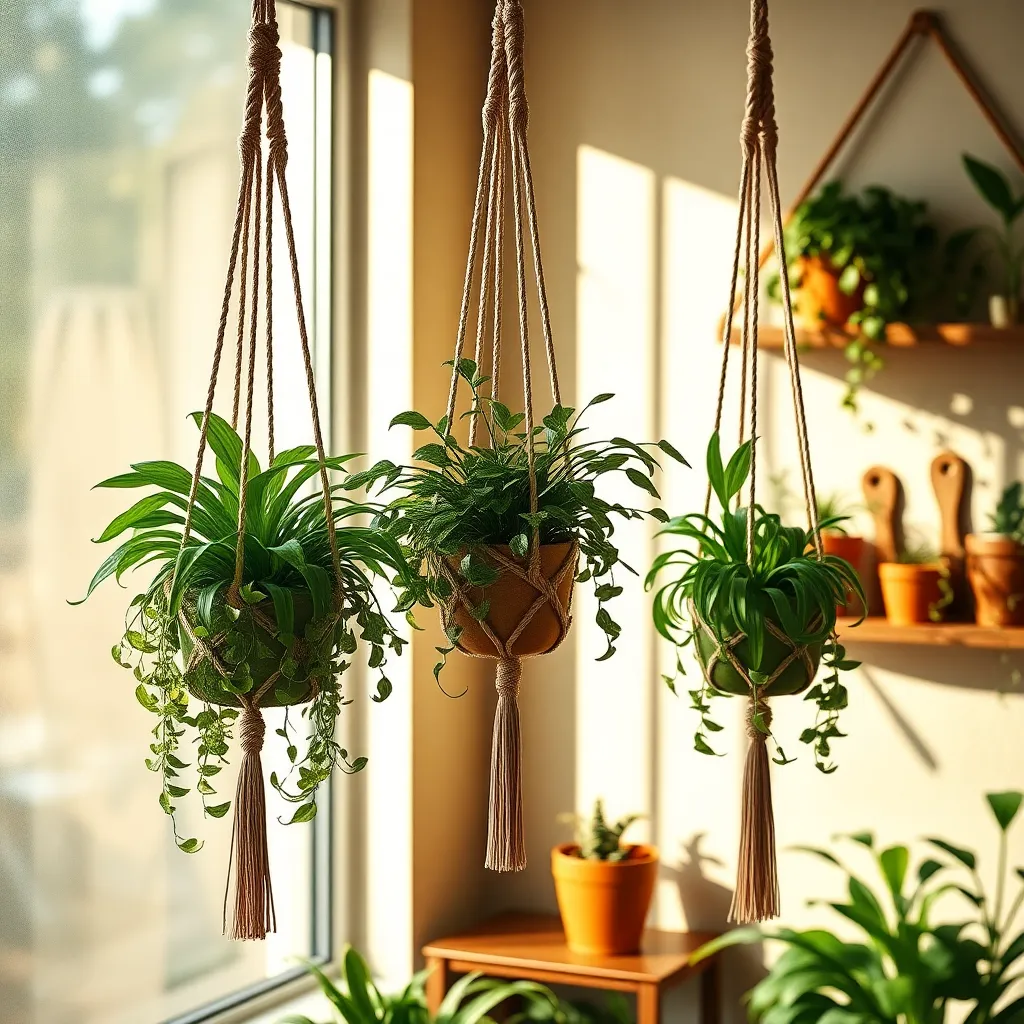
Macramé hangers offer a stylish way to add a touch of bohemian flair to your indoor or outdoor garden space. They are versatile and can hold a variety of plant sizes, making them perfect for both small succulents and larger trailing plants.
Consider using macramé hangers to display plants like pothos or spider plants, which thrive in well-draining soil and indirect light. To keep your plants healthy, water them thoroughly when the top inch of soil feels dry. This helps prevent overwatering, which is a common issue in hanging plant displays.
For beginners, macramé hangers are easy to use and require minimal setup. Simply ensure the hanger is securely fastened to a ceiling hook or sturdy beam to support the weight of the plant and soil.
Experienced gardeners might explore using macramé hangers in unique configurations, such as grouping multiple hangers together at varying heights for a dynamic look. This not only enhances the visual appeal but also allows different plants to receive the correct amount of sunlight.
To enhance plant growth, consider rotating your hanging plants every few weeks. This practice ensures even exposure to light and prevents uneven growth, maintaining the plant’s symmetry and health.
Install Floating Shelves Outdoors
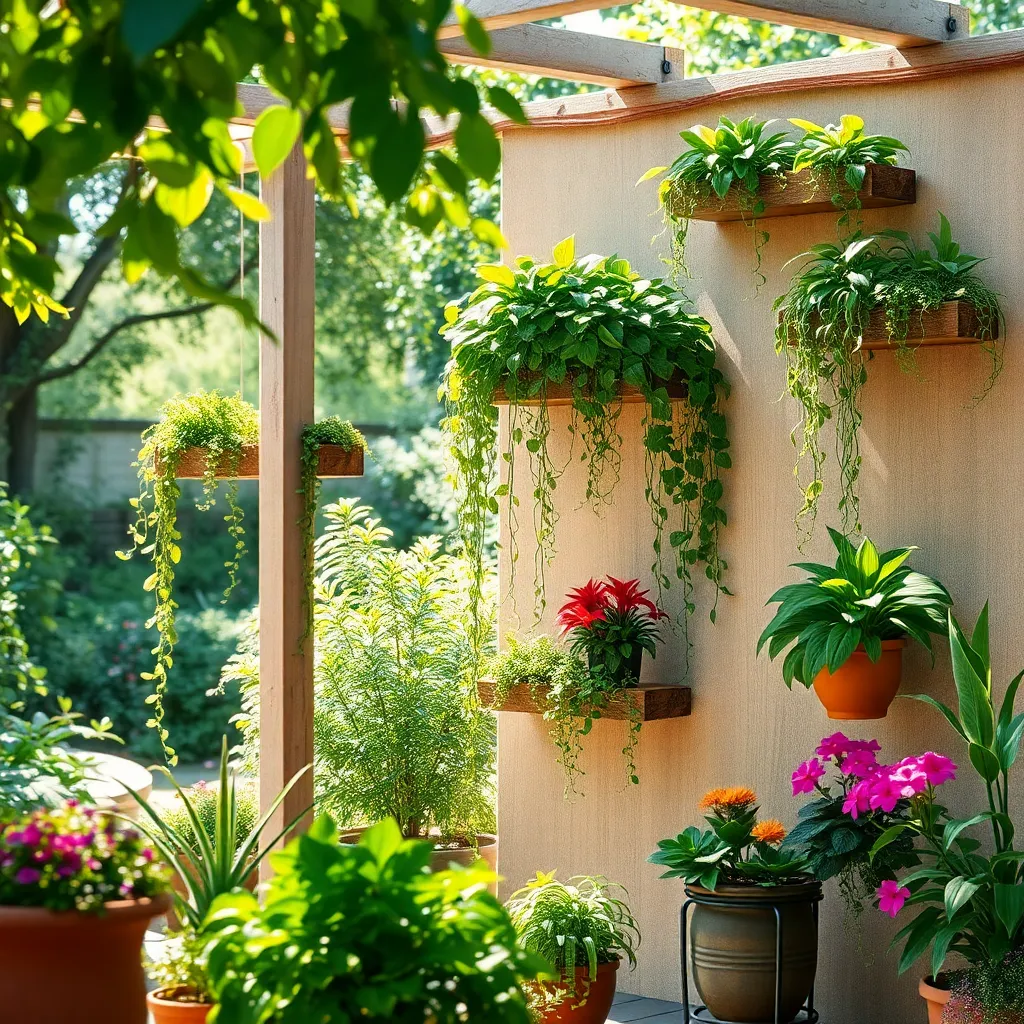
Floating shelves can transform a plain outdoor wall into a vibrant plant display. Choose weather-resistant materials such as metal or treated wood to ensure longevity and durability.
Before installing, measure the wall space to determine the ideal shelf size and placement. Ensure the shelves have adequate depth to accommodate a variety of pot sizes and weights.
Attach the shelves securely using outdoor-rated brackets and screws, ensuring they can bear the weight of wet soil and plants. Consider positioning the shelves in a sunny spot to suit sun-loving plants like succulents and herbs.
For a lush, layered effect, arrange plants at varying heights and include trailing varieties like ivy or string of pearls. Regularly check that the plants have proper drainage to prevent root rot, and water them according to their specific needs.
Hang Plants from Tree Branches
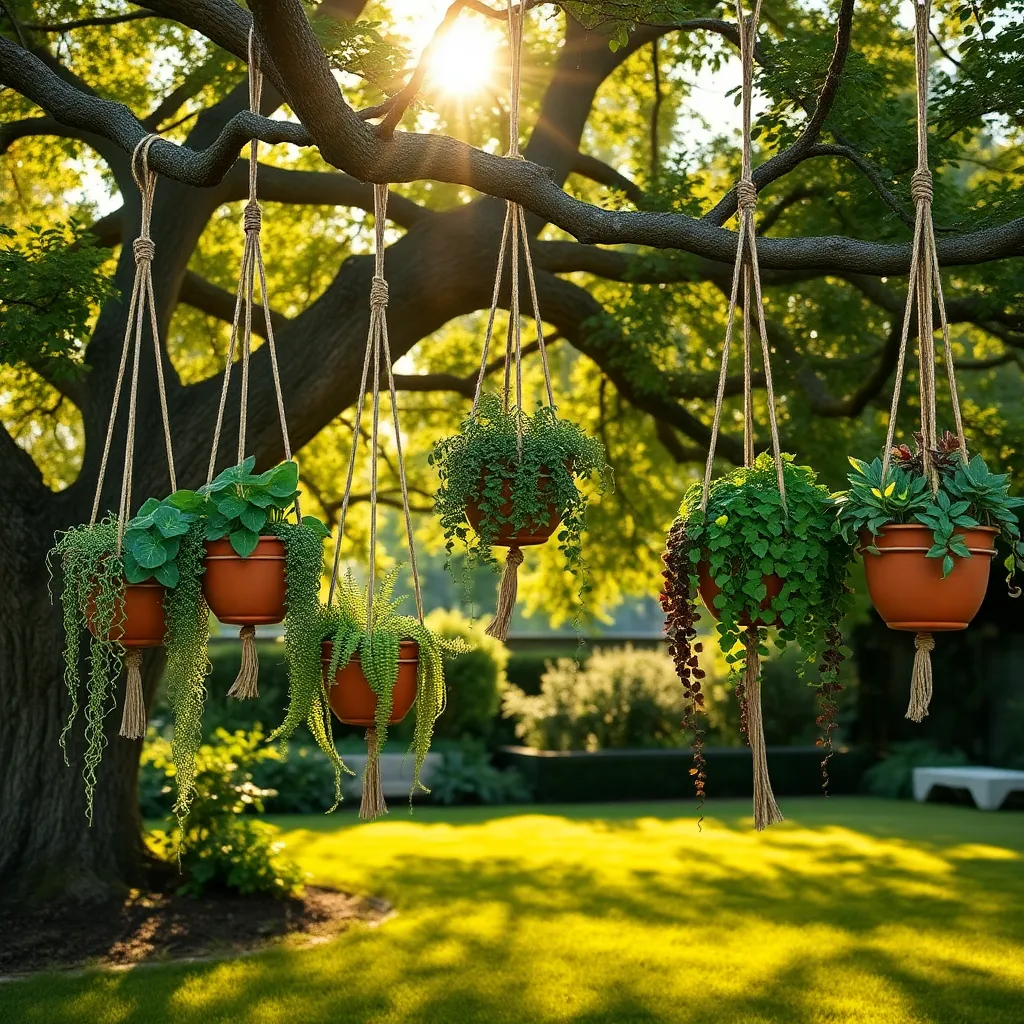
Hanging plants from tree branches can transform your garden into a lush, vertical oasis. Begin by selecting sturdy branches that can support the weight of your chosen plants, ensuring they are healthy and not prone to breaking.
Choose plants that thrive in the dappled light beneath trees, such as ferns, ivy, or spider plants. It’s important to use lightweight pots and ensure they have drainage holes to prevent waterlogging, which can harm both plants and branches.
To hang the plants, consider using durable materials like rope or chains, which can withstand outdoor conditions. Secure them firmly to the branches, leaving enough slack for gentle movement in the wind, mimicking natural plant growth.
For added visual interest, vary the heights at which you hang the plants, creating a layered effect. This can enhance the aesthetic appeal while maximizing the use of vertical space, making your garden feel more abundant and dynamic.
Attach Planters to a Trellis
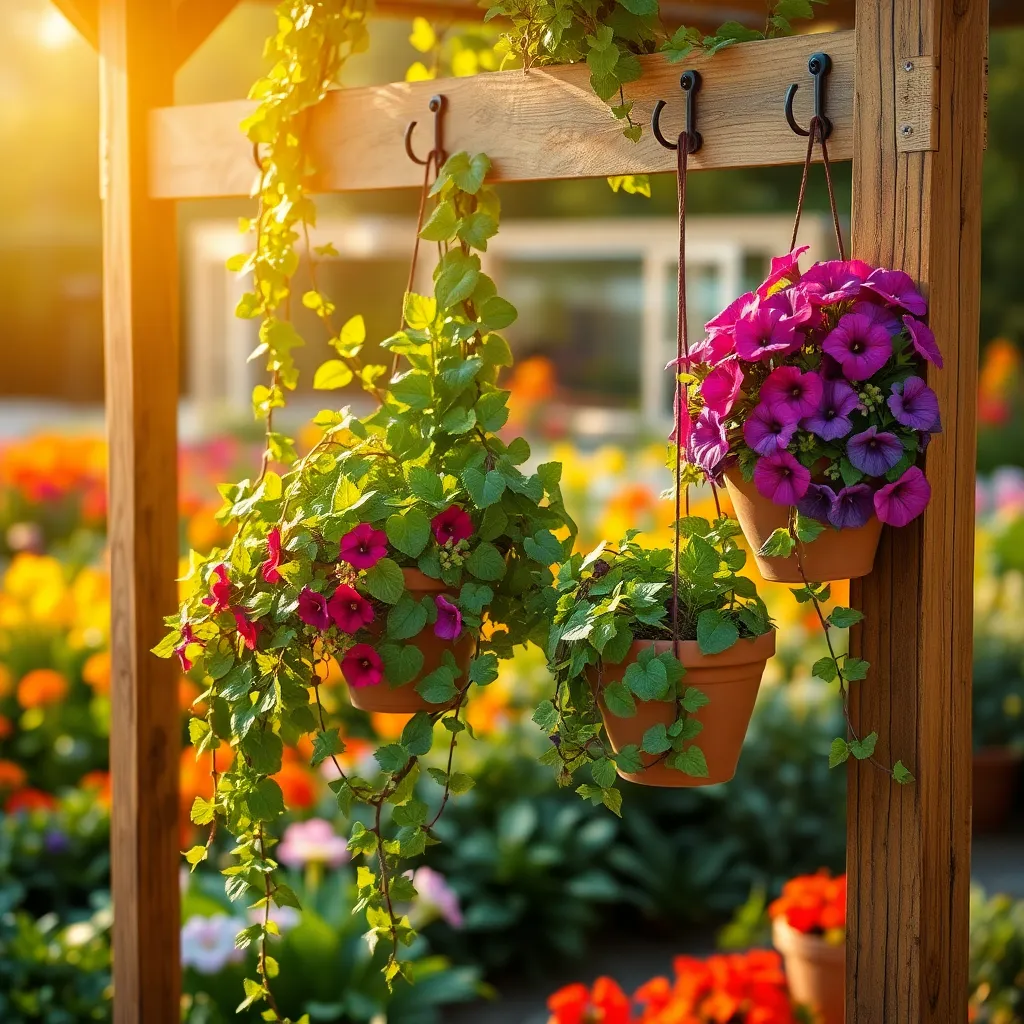
Attaching planters to a trellis offers a unique way to maximize vertical space and create a lush, green wall. This method is excellent for small gardens or patios where floor space is limited but vertical space is abundant.
Begin by selecting lightweight planters that can easily be affixed to the trellis without causing damage or instability. Ensure the trellis is sturdy enough to support the total weight of the planters, soil, and plants when filled.
Use zip ties or specialized hooks to securely attach the planters, ensuring they are evenly spaced to allow each plant adequate room to grow. Choose plants that thrive in well-draining soil, such as herbs or succulents, which make excellent choices for this setup.
Regularly check the moisture levels in the soil since planters mounted on a trellis can dry out more quickly than those on the ground. It’s also beneficial to select plants that require similar light conditions, as they will all be exposed to the same amount of sunlight.
Create Vertical Gardens with Grids
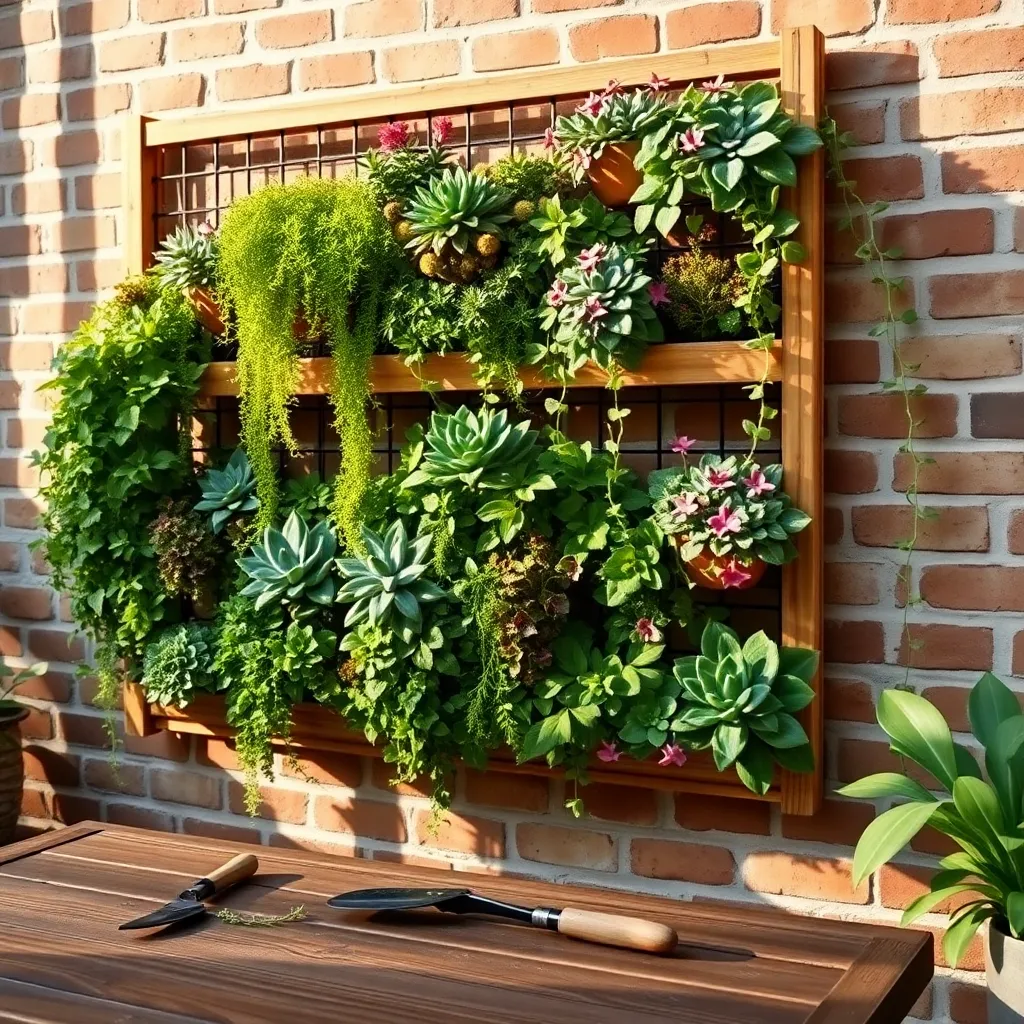
To create a vertical garden using grids, first select a sturdy grid or panel that can bear the weight of your chosen plants. Opt for materials like metal or treated wood, which offer durability and can support growth over time.
Secure the grid to a stable structure, such as a fence or wall, ensuring it is anchored well to prevent tipping. Position the grid in a spot that receives adequate sunlight for your plants, keeping in mind their specific light requirements.
When choosing plants, consider species that thrive in vertical environments, such as ferns, succulents, or trailing plants like ivy. Use a high-quality potting mix that retains moisture but also offers good drainage to prevent root rot.
Watering is crucial, so employ a drip irrigation system or water manually, ensuring all parts of your vertical garden receive adequate moisture. As the plants grow, regularly check for pests and prune as necessary to maintain their health and appearance.
Utilize Window Frames for Hanging
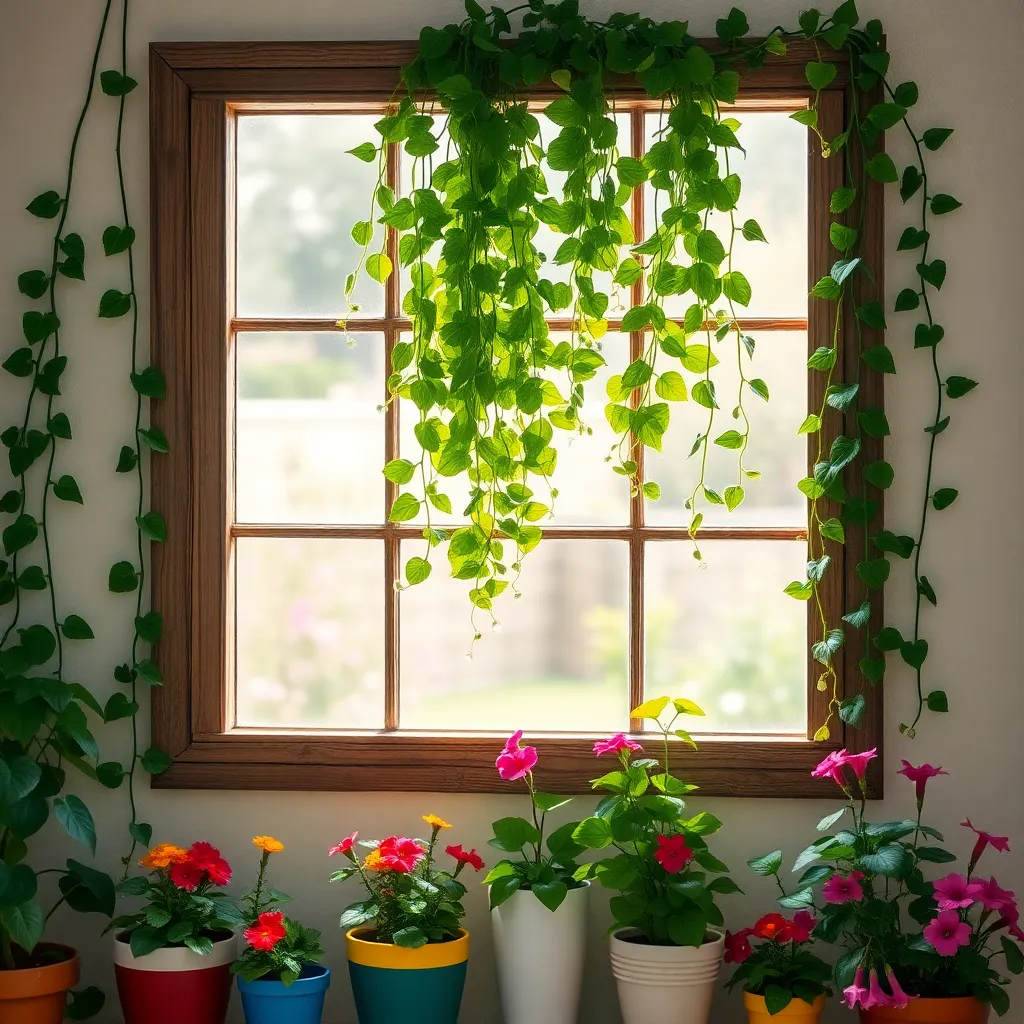
Window frames provide an excellent and often overlooked space for hanging plants, especially in urban environments where outdoor space is limited. By utilizing sturdy hooks or brackets, you can easily transform any window frame into a vertical garden. Consider using lightweight pots to prevent excessive strain on the frame, and ensure that the window gets sufficient sunlight for the specific plants you choose.
An ideal choice for window frame hanging is the spider plant, known for its resilience and air-purifying qualities. Spider plants thrive in indirect sunlight and require watering once the top inch of soil feels dry, making them low-maintenance and perfect for beginners. For more experienced gardeners, trailing plants like string of pearls can add an elegant touch to your window garden.
When selecting plants for your window frame, consider the orientation of the window to maximize growth potential. South-facing windows typically receive more sunlight, suitable for sun-loving plants like succulents, while north-facing windows are better for shade-tolerant varieties. Always use a well-draining soil mix to prevent root rot, and ensure your pots have adequate drainage holes.
To add an advanced touch, incorporate a simple drip irrigation system using a timer to maintain consistent moisture for your hanging plants. This approach can be particularly beneficial in warmer months when evaporation rates are higher. By regularly rotating your plants, you ensure even growth and prevent any side from becoming leggy due to inadequate light exposure.
Suspend Plants with Ceiling Hooks
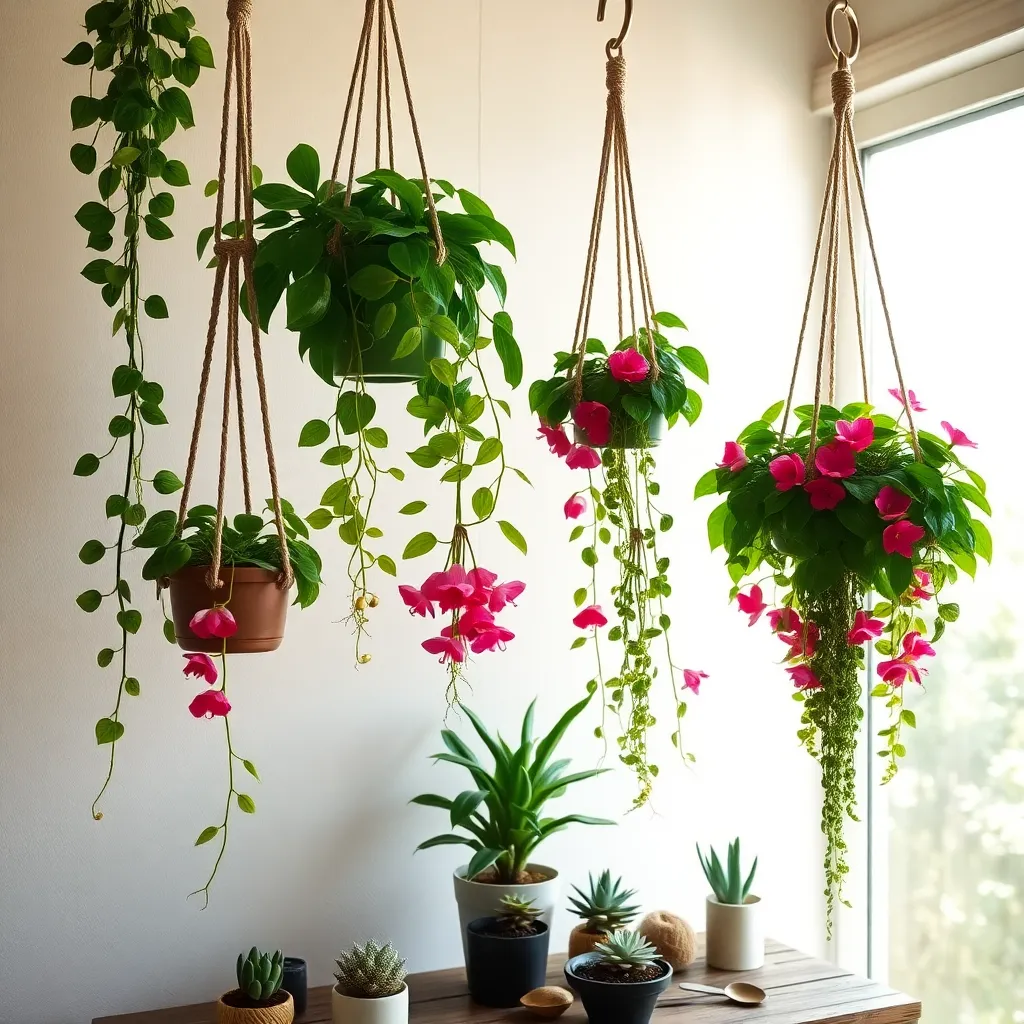
Ceiling hooks offer a versatile way to display hanging plants, particularly in spaces where floor or wall area is limited. By installing them in strategic locations, you can create a dynamic overhead garden that adds life and color to any room.
For beginners, choosing the right ceiling hook is crucial; opt for sturdy, screw-in hooks that can support the weight of your plants. Ensure that you install them into a ceiling joist or use appropriate anchors if attaching to drywall, as this will prevent accidents.
When selecting plants for ceiling hooks, consider lightweight options such as spider plants or string of pearls. These plants thrive in hanging environments, are easy to care for, and require minimal watering—typically once every one to two weeks.
Experienced gardeners might explore more challenging plants like Boston ferns or trailing ivy, which not only add lushness but also improve indoor air quality. Regular misting and a well-draining potting mix will help keep these plants healthy and vibrant.
Craft Plant Hangers from Rope
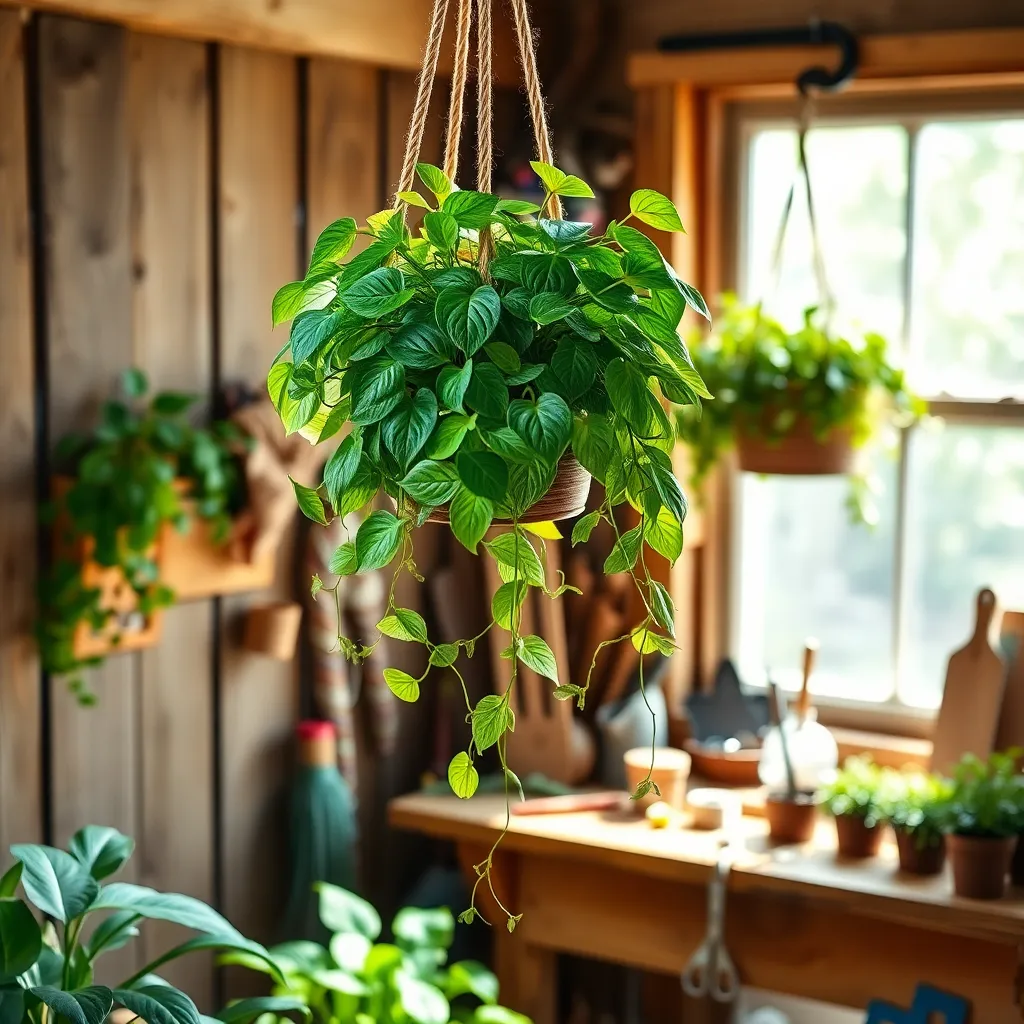
Creating plant hangers from rope is a delightful way to add a personal touch to your indoor or outdoor space. Begin by selecting a sturdy, weather-resistant rope, such as jute or cotton, which can withstand the weight of your plants and the elements.
Start by cutting several lengths of rope, each about 4 to 5 feet long, depending on how low you want your plant to hang. Secure the ropes together with a knot at one end, then divide the strands into pairs and tie a series of square knots to form a pattern.
Continue knotting until you reach the desired length, leaving enough rope at the end to form a loop for hanging. For a more advanced design, try incorporating beads or colored ropes into your arrangement to add visual interest and complexity.
Once your hanger is complete, gently place your plant pot into the cradle formed by the knots, ensuring it is stable and balanced. Choose plants that thrive in hanging environments, such as spider plants or pothos, which are both visually appealing and easy to care for.
To keep your hanging plants healthy, use a well-draining soil mix and water them regularly, allowing the top inch of soil to dry out between waterings. Ensure they receive adequate light, placing them near windows or bright areas, and rotate them periodically for even growth.
Incorporate Hanging Baskets Indoors
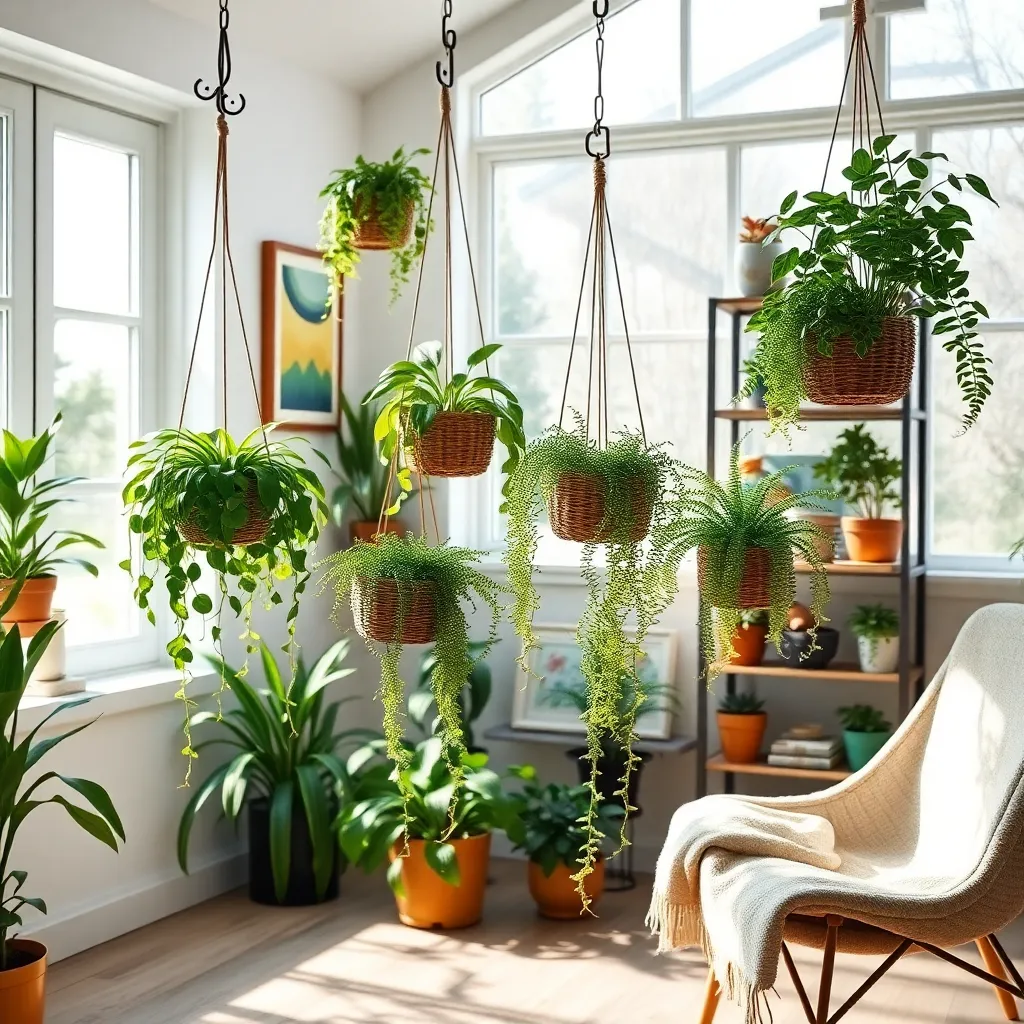
Hanging baskets indoors can transform your living space into a lush oasis. To start, choose a variety of indoor plants that thrive in hanging baskets, such as pothos, ferns, or spider plants. These plants are not only easy to maintain but also adapt well to indoor conditions, making them perfect for beginners.
Position your hanging baskets near a window to ensure they receive adequate light. Bright, indirect sunlight is ideal for most indoor hanging plants, but make sure to check specific light requirements for each plant type. For example, ferns prefer more shade compared to the sun-loving pothos.
Watering is crucial for maintaining healthy hanging baskets. A general rule is to water when the top inch of soil feels dry, ensuring that you do not let your plants sit in waterlogged conditions. Using well-draining potting soil will help prevent root rot, a common issue in indoor hanging plants.
For those looking to take their indoor gardening to the next level, consider adding a fertilizer regimen. Feeding your plants with a diluted liquid fertilizer every four to six weeks can promote lush growth. Remember to adjust feeding during the winter months when plant growth naturally slows down.
Conclusion: Growing Success with These Plants
In exploring the ’10 Creative Hanging Plants Display Ideas,’ we’ve unveiled a treasure trove of concepts that can enrich your relationship with both nature and your loved ones. From the soothing charm of macramé plant hangers to the innovative use of repurposed ladders and elegant wall shelves, each idea offers a unique way to bring greenery into your living space, fostering an environment of growth and connection. As you integrate these ideas, remember that nurturing relationships, much like plants, requires creativity, care, and attention.
To put this inspiration into action, choose one display idea to implement in your home this week. Notice how even a small change can invigorate your space and spark new conversations and connections. Remember, your environment is a reflection of your relationships; let it flourish with these creative touches.
Don’t forget to bookmark this article for future reference! Revisiting these ideas can serve as a gentle reminder of the beauty and creativity you bring to your relationships. As you continue this journey, may your relationships grow as beautifully and resiliently as your plants, thriving with love and shared experiences. Here’s to nurturing bonds that, like well-tended plants, stand the test of time.


